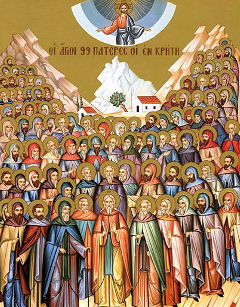In the early days, Christians would gather each year at the site of a martyr's death to commemorate his martyrdom. As time passed, there were group commemorations for martyrs who had all died on the same day.
During the persecution in the reign of the Roman Emperor Diocletian, the number of martyrs became so great, that a separate day could not be assigned to each of them, so between 300-400 A.D., the Church appointed a common day to honor them all. The day at that time was the first Sunday after Pentecost.
As the process of canonization was established, other saints were gradually added. Pope Gregory III,(731-741) consecrated a chapel in St. Peter's Basilica in Rome to all the saints, and he ordered the anniversary for November 1st. Pope Gregory IV (827-844) extended the November 1st. celebration to the whole Church.
All Saints' Day is still celebrated on November 1st. every year. On that day, many Christians remember everyone who is in heaven. Besides the canonized saints, there are many others whose names we've never heard. They have also led praiseworthy lives and deserve to be honored.
The vigil, or preceding day, seems to have been held as early as the feast itself. It was first referred to as "All Hallows' Eve", (hallowed meaning holy), or the evening before All Saints' Day. The name of the vigil has gradually evolved into "Halloween".

No comments:
Post a Comment